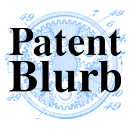Navigation
35 U.S.C. § 102
§ 102. Conditions for patentability; novelty
(a) NOVELTY; PRIOR ART.—A person shall be entitled to a patent unless—
(1) the claimed invention was patented, described in a printed publication, or in public use, on sale, <hi>or otherwise available to the public</hi> before the effective filing date of the claimed invention; or
(2) the claimed invention was described in a patent issued under section 151, or in an application for patent published or deemed published under section 122(b), in which the patent or application, as the case may be, names another inventor and was effectively filed before the effective filing date of the claimed invention.
(b) EXCEPTIONS.—
(1) DISCLOSURES MADE 1 YEAR OR LESS BEFORE THE EFFECTIVE FILING DATE OF THE CLAIMED INVENTION.—A disclosure made 1 year or less before the effective filing date of a claimed invention shall not be prior art to the claimed invention under subsection (a)(1) if—
(A) the disclosure was made by the inventor or joint inventor or by another who obtained the subject matter disclosed directly or indirectly from the inventor or a joint inventor; or
(B) the subject matter disclosed had, before such disclosure, been publicly disclosed by the inventor or a joint inventor or another who obtained the subject matter disclosed directly or indirectly from the inventor or a joint inventor.
(2) DISCLOSURES APPEARING IN APPLICATIONS AND PATENTS.—A disclosure shall not be prior art to a claimed invention under subsection (a)(2) if—
(A) the subject matter disclosed was obtained directly or indirectly from the inventor or a joint inventor;
(B) the subject matter disclosed had, before such subject matter was effectively filed under subsection (a)(2), been publicly disclosed by the inventor or a joint inventor or another who obtained the subject matter disclosed directly or indirectly from the inventor or a joint inventor; or
(C) the subject matter disclosed and the claimed invention, not later than the effective filing date of the claimed invention, were owned by the same person or subject to an obligation of assignment to the same person.
(c) COMMON OWNERSHIP UNDER JOINT RESEARCH AGREEMENTS.—Subject matter disclosed and a claimed invention shall be deemed to have been owned by the same person or subject to an obligation of assignment to the same person in applying the provisions of subsection (b)(2)(C) if—
(1) the subject matter disclosed was developed and the claimed invention was made by, or on behalf of, 1 or more parties to a joint research agreement that was in effect on or before the effective filing date of the claimed invention;
(2) the claimed invention was made as a result of activities undertaken within the scope of the joint research agreement; and
(3) the application for patent for the claimed invention discloses or is amended to disclose the names of the parties to the joint research agreement.
(d) PATENTS AND PUBLISHED APPLICATIONS EFFECTIVE AS PRIOR ART.—For purposes of determining whether a patent or application for patent is prior art to a claimed invention under subsection (a)(2), such patent or application shall be considered to have been effectively filed, with respect to any subject matter described in the patent or application—
(1) if paragraph (2) does not apply, as of the actual filing date of the patent or the application for patent; or
(2) if the patent or application for patent is entitled to claim a right of priority under section 119, 365(a), or 365(b), or to claim the benefit of an earlier filing date under section 120, 121, or 365(c), based upon 1 or more prior filed applications for patent, as of the filing date of the earliest such application that describes the subject matter.’’.
